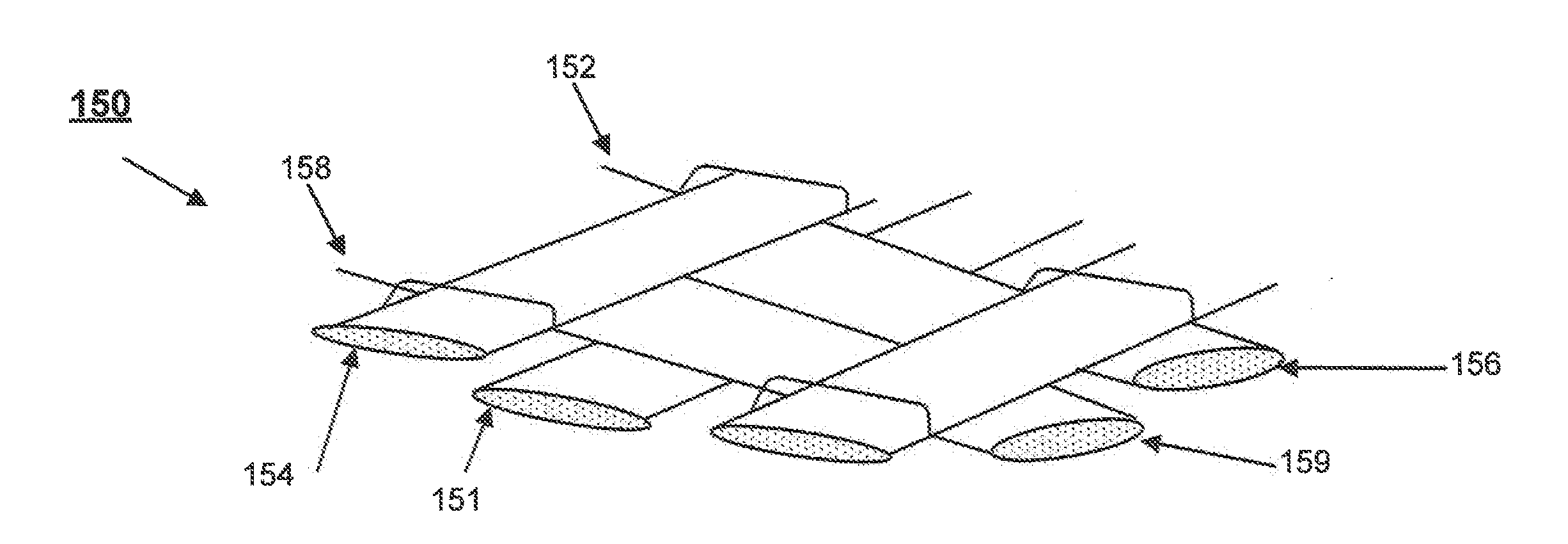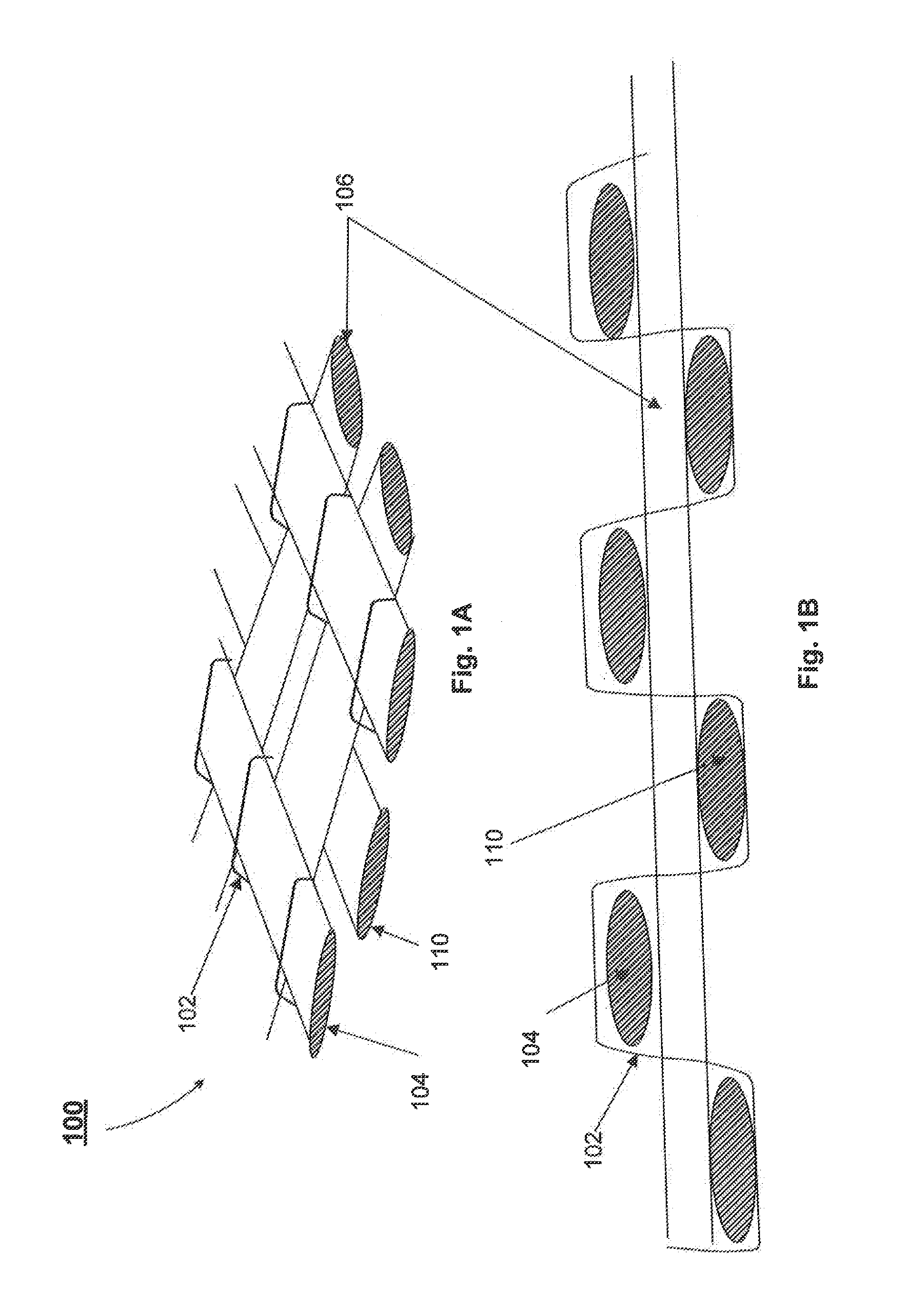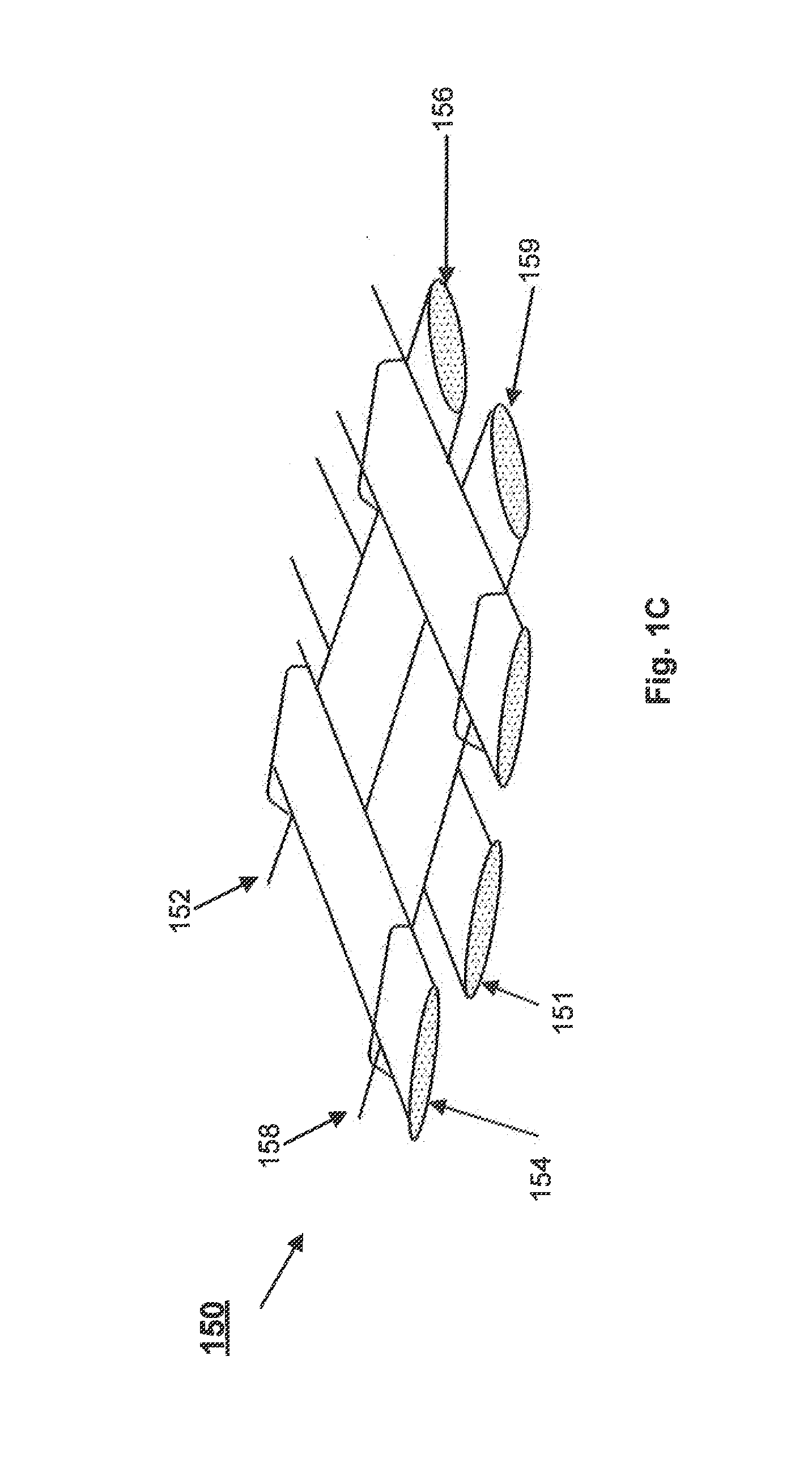Systems and methods for reduced crimp carbon fiber helical fabric
a technology of helical fiber and carbon fiber, which is applied in the direction of weaving, ornamental textile articles, looms, etc., can solve the problems of large amount of fiber waste, large amount of fiber selection and fiber architecture design limitations, and performs subsequently subject to a costly carbonization cycle to transform the fibers, so as to reduce the load of primary fibers, reduce the cross section, and reduce the effect of crimp fabrics
- Summary
- Abstract
- Description
- Claims
- Application Information
AI Technical Summary
Benefits of technology
Problems solved by technology
Method used
Image
Examples
example
[0042]One high areal weight helical carbon fabric showing no evidence of fiber crimp was fabricated with the proposed invention. The 1400 g / m2 fabric was prepared with a plain weave pattern alternating every other primary warp carbon fiber tow with a cotton yarn. The warp carbon fiber was a 48K tow and the interlocking yarn was a 40 denier cotton yarn. The fabric handled very well during packaging steps and feeding into a circular needle-punch loom where several near net shape preforms were fabricated.
PUM
| Property | Measurement | Unit |
|---|---|---|
| temperatures | aaaaa | aaaaa |
| temperatures | aaaaa | aaaaa |
| temperatures | aaaaa | aaaaa |
Abstract
Description
Claims
Application Information
 Login to View More
Login to View More - R&D
- Intellectual Property
- Life Sciences
- Materials
- Tech Scout
- Unparalleled Data Quality
- Higher Quality Content
- 60% Fewer Hallucinations
Browse by: Latest US Patents, China's latest patents, Technical Efficacy Thesaurus, Application Domain, Technology Topic, Popular Technical Reports.
© 2025 PatSnap. All rights reserved.Legal|Privacy policy|Modern Slavery Act Transparency Statement|Sitemap|About US| Contact US: help@patsnap.com



